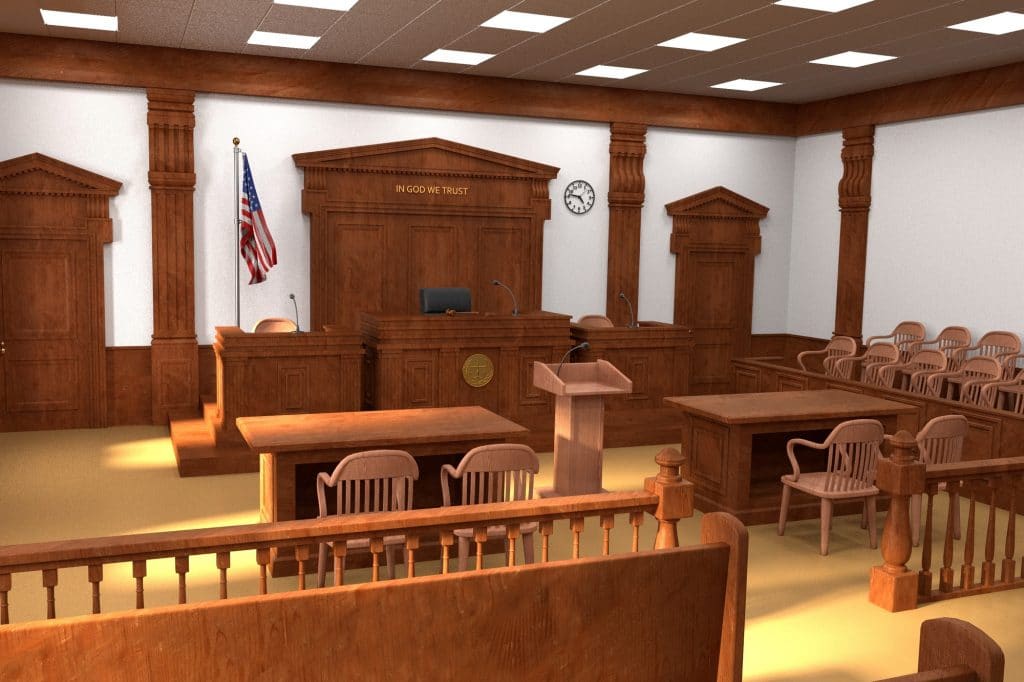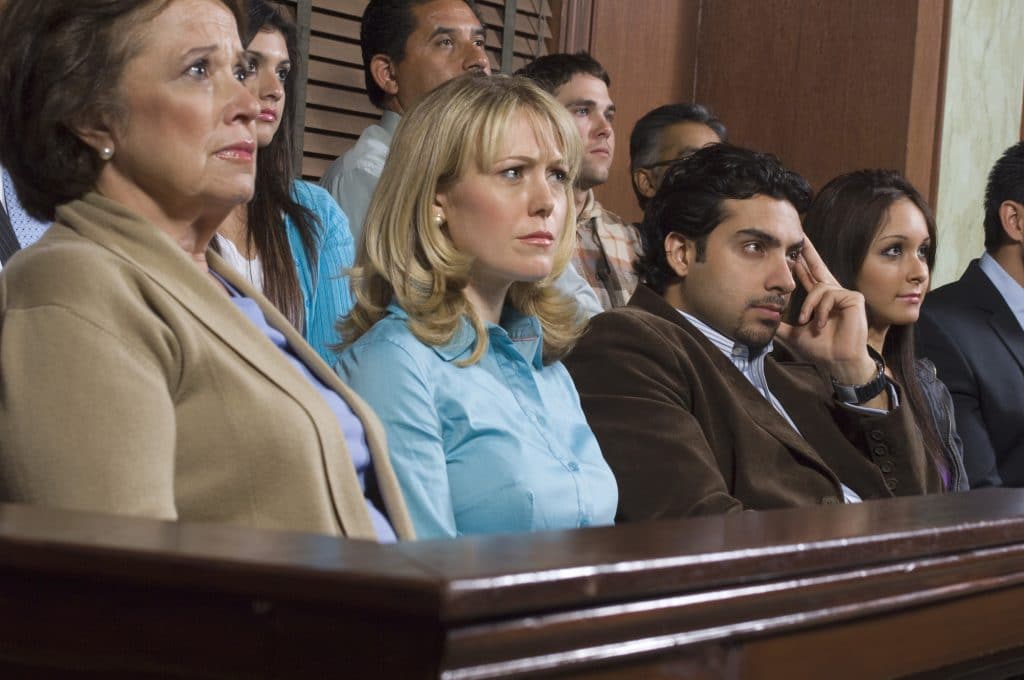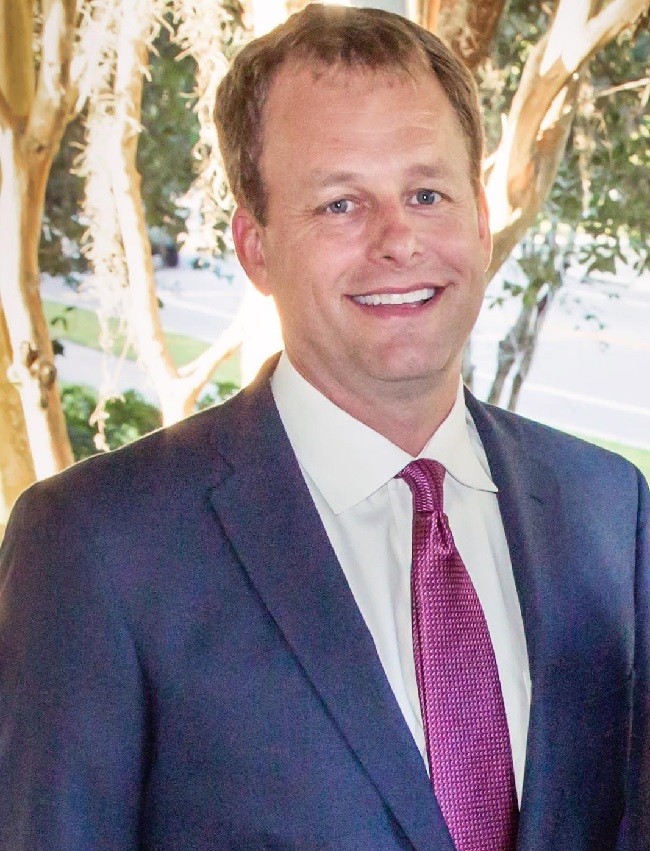10 Things To Know as a Juror On a Personal Injury Trial
Posted on: July 13, 2020Serving as a juror?
Here are the top 10 things that jurors may want to know before a personal injury trial.
If this is your first time serving as a juror, you probably have a lot of unanswered questions. But while there are plenty of online guides to walk you through the ins and outs of showing up at the courtroom every day, there’s a good chance that none of them will tackle the things you really need to know.
Namely: how to reach a fair verdict.
And if you’re sitting on a personal injury trial, things can get even more confusing…especially if you’re expecting one of the high-stakes courtroom dramas from TV. But the plaintiffs in these cases deserve just as much justice as a defendant in a criminal case.
So if you’ve been selected to serve as a juror for a personal injury trial, here are 10 things that can give you better insight into the case.
1. The insurance company is involved.
In Florida, the non-joinder statute prohibits attorneys from discussing that the defendant has insurance. So, the jurors never know that an insurance company is not only backing the defendant, but paying for the defense of the case.
In nearly every trial, a juror sends a question to the judge asking where the insurance company is. The judge cannot answer that question, and it must be ignored when it is raised. However, the correct answer is that the insurance company is sitting there at the table with the defendant.
It often makes for an awkward situation at trial with everyone trying to avoid saying the word “insurance” while every juror is wondering where the insurance company is.
2. The case is usually being tried because the insurance company did not make a fair offer.
In every case in Florida, the case must go to mediation. Mediation is the opportunity for the parties to get together and try to resolve the case. In nearly 80% of the cases, the case resolves at mediation or sometime thereafter.
When the case does not resolve, however, it is usually because the insurance company has decided that it would rather try the case than pay a fair settlement. However, jurors do not get to know about settlement negotiations or the reason that the case has gone to trial.
3. The defense experts are hired guns.
Insurance companies retain experts who already hold the “proper” viewpoint (i.e. their opinion is always favorable to the insurance company). We have seen defense experts issue reports and forget to change the name of the plaintiff, which further emphasizes that they say the same thing every time in support of the insurance company.

Certain experts earn millions of dollars each year from insurance companies. Yet, the plaintiff cannot point out that insurers have paid the expert $4 million last year, for example.
So, jurors are left with the impression that the experts at trial are just well-paid for that specific trial and do not have an inherent bias.
4. The Plaintiff has endured a lot of anguish to get to the trial.
Insurance companies and their attorneys often make the process of litigation very difficult, if not impossible.
They will delay cases for months—if not years—to delay justice for the Plaintiff. The Plaintiff has answered written questions under oath and had a deep dive into their personal and medical background. The Plaintiff has sat through a deposition where they are often made to feel like a liar if they forget one or two details from 20 years ago.
Many times, even if there is no surveillance at trial, the insurer has followed around the Plaintiff on multiple occasions but simply did not find anything against the victim that was usable. The defendant has had the Plaintiff seen by a doctor or doctors chosen by the insurance company.
And, the Plaintiff cannot tell you the hours of additional stress and anxiety that has been placed on their life by having to endure the litigation process.
5. The Plaintiff may have stopped treating because they do not have the financial means to continue with treatment.
Many of our clients are reluctant to continue treatment even when the doctor has agreed to a Letter of Protection (which is an agreement to delay collecting payment until the case is over), simply because of the concern with how much the medical expenses are increasing. So, they must make a trade-off between staying financially sound (and also not increasing their stress too much by running up large bills) while trying to recover from their injuries.
The Defendant (i.e. the insurance company) often tries to use this information against the Plaintiff by making the claim that, since they stopped medical treatment, they must not be “truly” injured.
6. “Failure to seek emergency treatment” is often meaningless.
Insurance companies and their attorneys often are critical of victims for not seeking treatment at the hospital.
However, we’ve found that many of our clients simply don’t see the hospital as a viable option after their accident. In most cases, they feel that the emergency room is for people with broken bones, severe lacerations, and other serious injuries.
In fact, when most of our clients leave the crash scene, they are thinking only of a swift and thorough recovery. They don’t want to burden the (already overworked) healthcare system with an ER visit just to make it “look good” on the slim chance that they may have a case later.
7. Degenerative issues seen on MRI are often asymptomatic.
One of the major defenses by insurers is that every injury and issue pre-existed the crash.
Even in the absence of pre-existing treatment, the insurers will raise this defense. Yes, nearly everyone has some level of degeneration in their spine. However, most of these people are asymptomatic until a traumatic event occurs. Thus, the presence of degeneration in the spine is often meaningless and certainly not a defense to why the person is feeling pain and suffering with the difficulties associated with such pain.
8. Injuries do not always magically heal in 8-12 weeks.
The defense doctor will often state that the injuries were restricted to “soft tissue” and any treatment after 8-12 weeks is not related to a crash. Their argument is that, after 8-12 weeks, even if the person still has pain that started after the crash, any continuing pain is the result of something else.
Accepting this logic, the pain would have come to our client 8-12 weeks after the day of the crash even if the crash had not occurred. This defense makes no sense, but it is often the central theme of the defense case that all pain and issues after the first 8-12 weeks post-crash are related to something else.

9. PIP payments are not made only for soft tissue injuries.
Many times, defense attorneys will argue that the PIP payments for medical treatment are enough and that the victim should receive no further compensation.
First, there is no “compensation” to the victim for PIP payments because they are made directly to the provider from their own insurance company, not the defendant’s. Additionally, PIP payments are not earned due to the nature of the injury. As long as the injury and treatment is related to the crash, payments will be made through PIP benefits.
However, defense attorneys try to give the impression that PIP payments are enough for the victim. In reality, however, PIP payments only cover 80% of medical bills following a crash, and only up to the coverage limit. As many injured plaintiffs find out, PIP is not the end-all, be-all in terms of accident reimbursement.
10. Minimal visible property damage does not mean the person was not injured.
The general perception is that the bigger the impact and more visible damage, the more chance that the person was injured in the crash.
In our experience (more than 65 years between us!), we have seen individuals in rollovers and otherwise horrifying property damage crashes who walked away with minimal injury. We have also seen individuals with minor visible damage to their vehicles who sustained injuries that impacted them for the rest of their life.
Every individual circumstance is different. The person in the “minor visible damage” collision may have been looking to the side at the time of the crash or have other problems that make them susceptible to an injury.
We also have seen video of impacts at only 5 mph where a significant movement of the spine, particularly the neck, was visible during the impact.However, these cannot be shown to jurors at trial. The result is that the jury doesn’t see the whole picture because the insurance company wants to focus only on the photographs.
Conclusion
When you’re sitting in the jury box at a personal injury trial, you may get the feeling that you are “flying blind.” After all, there is no Law & Order: Personal Injury series on TV, so most people are unaware of the information that goes on behind the scenes.
At the law offices of Beers & Gordon, P.A., we meet with the plaintiffs in personal injury trials day after day. We see their struggles firsthand and we know how important it is to them and their families that they get a fair trial. Our greatest desire for our clients and what they want most is that that the result is fair.
We hope this article has given you a better understanding of how personal injury trials are conducted so that you can return an informed verdict.







